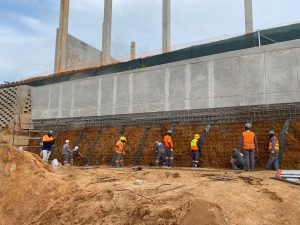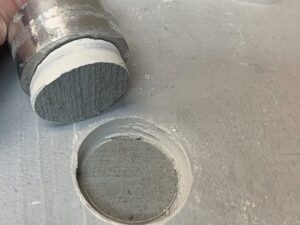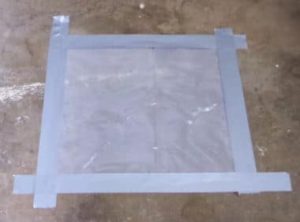In this article, Carl White discusses the difference between colloidal silica post-placement pozzolan (P3) and silicate salt admixtures.
Silicate salt admixtures generally consist of sodium, potassium or lithium silicates. They form Calcium Silicate Hydrate (C-S-H) that closes void structures to decrease the permeability of concrete. However, they only partially address the formation of capillary and bleed water channels. No known admixture technologies are able to close capillary and bleed water channels and void structures.
Silicate salt admixtures introduce silica that is chemically bonded to a metal, typically sodium, potassium and lithium. Therefore, a certain amount of energy from the concrete system needs to be spent to separate the cation from the silica. Moreover, during this process, other reactants are formed in addition to C-S-H. These include sodium hydroxide and potassium hydroxide, both of which have been found to be detrimental to concrete.
Colloidal silica post-placement pozzolan
United States-based SprayLock Concrete Protection’s SCP technology contains colloidal silica post-placement pozzolan (P3). Colloidal silica post-placement pozzolan (P3) is a suspension of amorphous silicon dioxide particles (SiO2) that are small enough to defy gravity. Notably, SCP product particles are many times smaller than silica fume or metakaolin. They, therefore, provide significantly more surface area to improve the pozzolanic reaction.
SCP products are applied after initial set of the concrete when capillary and bleed channels have formed. The colloidal silica post-placement pozzolan (P3) then enters concrete and reacts with available alkalis to form C-S-H. This fills the void structure of the concrete within the reaction zone, providing many benefits to concrete, including significantly improving its durability.
Colloidal silica provides greater protection
Colloidal silica post-placement pozzolan (P3) provides greater concrete protection than silicate or waterproofing admixtures.
SCP products are ready to combine chemically with calcium hydroxide with no dissociation energy required. This is considering that they contain unbonded silicon dioxide particles that are very small. The C-S-H formed is even longer-chain and more stable than that formed by cement hydration.
Stellar performance of colloidal silica
The stellar performance of our colloidal silica post-placement (P3) technology versus silicate admixtures are detailed in the table below.
SCP published test results compared to those of leading silicate admixture brands
| Leading silicate admixture reported | SCP products | |
| Resistance to hydrostatic pressure improvement | 93% | 94% to 99% |
| Compressive strength improvement | 10% | 8% to 20% |
| Sulphate attack resistance improvement | 99% | 77% |
| Chloride bulk diffusion improvement | 25% | 40% to 70% |
| Sulfuric acid resistance improvement (5% sulfuric acid) | Significantly lower | 35% |
| Comparable curing to moist curing | NR | Yes |
| Drying shrinkage reduction | NR | 30% to 94% |
| Abrasion resistance improvement | NR | 45% to 60% |
Colloidal silica closes capillaries
To summarise, colloidal silica post-placement pozzolan (P3) closes capillaries and bleed water channels with reaction products after they have formed.
Concrete permeability reducing admixtures may be effective in some instances. Even so, bleed water channels and capillary structures are likely to still be present in conventional concrete.
Carl White is Managing Director of Spraylock Africa, the African distributor of SprayLock Concrete Protection’s cutting-edge colloidal silica post-placement pozzolan (P3) products.






